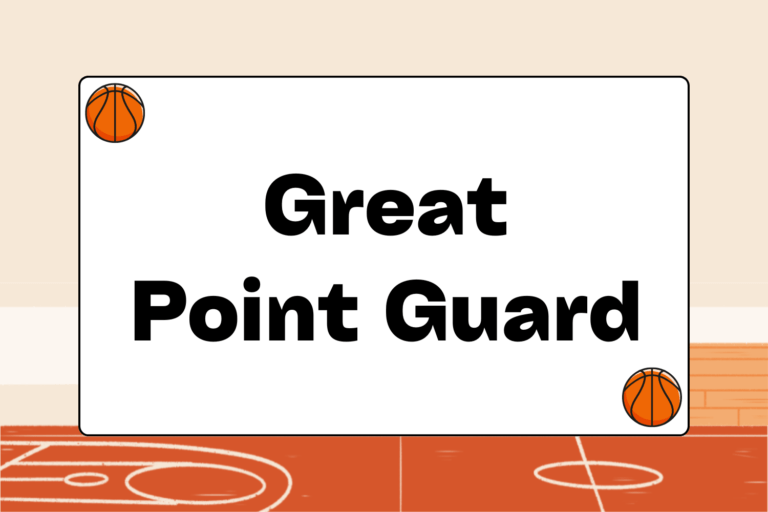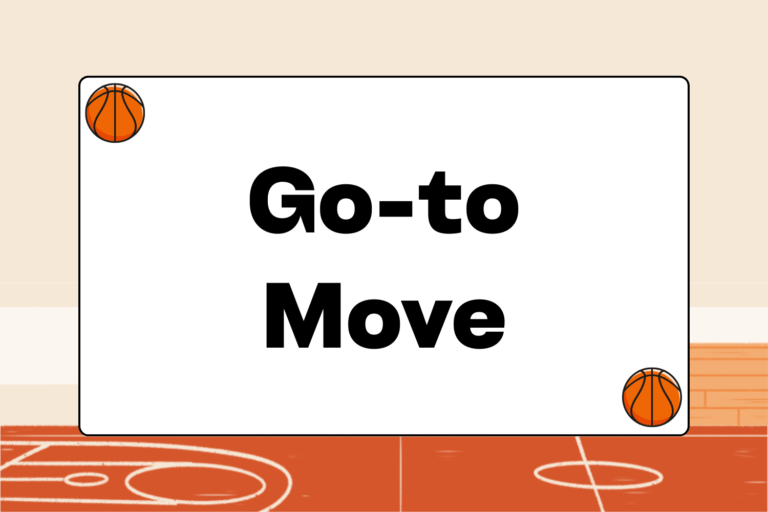The best defensive basketball teams work tirelessly to improve off-ball, team-oriented defense. Strong off-ball defense compensates for shortcomings in speed and experience, putting players in the right position to get stops and create turnovers.
At its core, strong defense away from the ball concentrates on three keys for success:
- Positioning
- Footwork
- Technique
Defenders who are properly positioned away from the ball, use quick feet, and have the right technique get more steals and deflect more passes than more talented but less prepared defenders.
Only experience and coaching can teach players about the right positions for different game situations. However, this guide will cover the fundamental rules for success when defending away from the ball.
One Pass Away
The way an offensive player is defended changes based on where the ball is on the floor. Specifically, defensive positioning should be tighter when the ball is one pass away. In this situation, the defender bears responsibility for guarding both his man and the ball, and must be ready to help on dribble penetration.
Having double-duty on one-pass-away situations is easier when a defender has the right position and technique:
- Be equal distance from denying both the pass and the penetration: Ideally, the defender is close enough to discourage the dribbler from penetrating, but can also quickly close out on his man if the ball is passed to him.
- Use proper defensive stance: Knees are bent, weight is on the balls of the feet, and palms are out to deflect a pass. The defender must be ready to react quickly to the ball or to his man.
- See the man and the ball: A good rule of thumb is to have one hand pointed toward the ball and the other pointed toward the offensive player.
- Hands are up: Palms are out, facing the ball to deny passes and discourage dribble penetration.
Practice both getting into, and maintaining, the proper technique and quick footwork in drills until it becomes a habit. Offensive teams will test a defense’s ability to fall back into proper technique time and again with cross-court passes and transition offense. The best offenses are ready to pounce when a defense gets tired, or starts to overplay the ball or sag into the lane.
Mental Edge
Many coaches emphasize ball reversal and skip passes to loosen up defensive positioning. For this reason, proper position and technique on the court have to be as second-nature as walking and breathing.
Vision
For many players, the biggest challenge to off-ball defense is being able to see both the offensive man and the ball at all times. It’s important to be facing a point exactly between the ball and the man throughout the offensive possession, and to use peripheral vision to see each simultaneously.
This skill is lost on many young players, who are tempted to turn their head to see the ball or glance back and forth between the ball and the man they are guarding. Doing this makes it easy for the offensive player to make a quick cut to the basket when the defender isn’t looking.
Ball Denial
Ball denial requires different technique depending on the position of the defender and the aggressiveness of the defense. Perimeter players who deny the pass to their man are playing an aggressive defensive style, while post players should normally have their body on their opponent and play to deny the entry pass.
Ball denial skills involve a hand into the passing lane and quick side steps to defend the movement of the offensive player. The denial hand should alternate from left to right and back depending on the movement of the man working to get open.
Many coaches prefer that perimeter defenders sag into the lane to guard against dribble penetration. Also, it’s common for the only defenders playing ball denial to be one-pass-away defenders. In this case, the weak side defenders sag into the lane or keep one foot in the painted area, ready to defend the ball in the paint.
Two Passes Away
The defensive position of the defender who is two passes away from the ball should be a product of the on-ball and one-pass-away defense. It should also be attentive to the offensive strengths of the opponent. This is the nature of team defense, and is the way the best defensive teams operate.
Generally speaking, the following principles apply to weak side defense:
- Sag into the paint: When the ball is on the opposite side of the floor, the weak side defender should be in the painted area, but still have his eyes on the ball and his man.
- Step out to defend: When the on-ball defense is aggressive, it’s normal to overplay the cross-court pass. Step out to the offensive man in this case.
- Double-team help: Be ready to rotate when a teammate leaves his man to double-team the ball or a big man. Slide over as soon as the double-teamer leaves.
- Be ready: Many offenses are based on the ability to quickly rotate the ball cross-court. Use quick close-outs when the ball is rotated to the offensive man.
Weak side defenders can sometimes get lazy, relying on their ability to recover quickly if the ball gets to their man. Instead, good weak side defenders should think of their position as an opportunity to roam more freely, or cheat based on experience to get a steal or deflection. Practice sound defense and make it a habit on the court.
Basic Rules of Off-ball Defense
Off-ball defense focuses on a few core ideas:
- See the man and the ball constantly.
- Deny the ball or entry passes.
- Be close enough to guard the opponent if the ball is passed there.
- Swarm the ball if it enters the paint.
Making these skills routine allows a defender to play aggressively, eventually by instinct and habit. Turning off-ball defense into a team strength can turn average teams into tough competition in a hurry.





